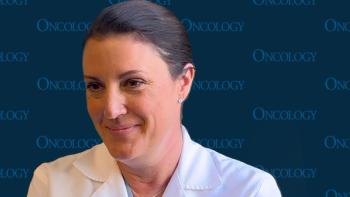
OPT-822/821 Vaccine Delayed Breast Cancer Progression in Immune Responders
OPT-822/821 vaccination did not show any improvement in progression-free survival as maintenance therapy compared with placebo for metastatic breast cancer. But in those patients who had an immune response, the vaccine did appear to show activity.
OPT-822/821 vaccination did not show any improvement in progression-free survival as maintenance therapy compared with placebo for metastatic breast cancer, according to the results of a study presented at the 2016 American Society of Clinical Oncology (ASCO) Annual Meeting, held June 3–7 in Chicago (abstract
“In patients receiving the vaccine who generated an IgG titer of greater than 1:160 to OPT-822 at any time during the treatment, and specifically, these are IgG antibodies against Globo H, those patients had a superior progression-free survival to placebo and compared to those without an immune response,” said study presenter Hope Rugo, MD, of UCSF Helen Diller Family Comprehensive Cancer Center.
Globo H is a cancer-associated carbohydrate antigen expressed by a number of epithelial cancers, including breast cancer, and Globo H antibodies are found in the plasma of breast cancer patients. According to Rugo, carbohydrates demonstrate poor immunogenicity in general, so they are difficult targets for immune therapy.
“A solution to this would be to conjugate the target antigen with a carrier protein and then administer with immunologic adjuvant to enhance the immune response,” Rugo said.
OPT-822/821 vaccine consists of Globo H covalently linked to a carrier protein KLH and a sponin-based adjuvant purified from a tree bark. Globo H depletion by the vaccine has been shown to effectively block immunosuppression by increasing Notch1 degradation, therefore achieving tumor regression.
This phase II/III trial enrolled women who had metastatic disease with two or fewer events of progressive disease and had achieved at least stable disease after one or more anticancer regimens. The 349 women were randomly assigned 2:1 to subcutaneous OPT-822/821 or control in combination with low-dose cyclophosphamide. The vaccine was given weekly for the first 3 weeks and then monthly, with a booster given at week 37. Cyclophosphamide was given 3 days prior to the vaccine or placebo. The primary endpoint was progression-free survival.
At a median follow-up of 22.5 months, the vaccine had no effect on progression-free survival compared with placebo (hazard ratio [HR], 0.96 [95% CI, 0.74–1.25]). The median progression-free survival was 32.9 months for OPT-822/821 compared with 40 months for placebo. Similarly, no advantage was found for the drug in an interim overall survival analysis.
According to Rugo, the researchers were interested in understanding if exposure to the vaccine could change outcomes. Almost half of patients (48%) received all nine of the scheduled injections. Among those patients, there was a trend toward improvement in progression-free survival compared with placebo (HR, 0.66 [95% CI, 0.42–1.01]; P = .057), with a median progression-free survival of 90.1 months for the vaccine arm compared with 72.6 months for the placebo arm.
“This was interesting and made us further explore the humoral immune response in patients who were treated with the vaccine,” Rugo said.
Next, the researchers looked at just those patients who had developed a Globo H–specific IgG response to the vaccine with a titer of 1:160 or greater at any time during treatment. Among these patients, there was a significant improvement in progression-free survival (HR, 0.71 [95% CI, 0.52–0.97]; P = .029) and overall survival (HR, 0.57 [95% CI, 0.33–0.97]; P = .04) compared with placebo. In addition, compared with those patients who did not respond, responders to the vaccine also had significantly improved progression-free survival (HR, 0.51 [95% CI, 0.37–0.71]; P < .0001) and overall survival (HR, 0.5104 [95% CI, 0.29–0.92]; P = .0207).
Finally, the researchers conducted a subset analysis to see if they could tease out differences between immune responders compared with placebo and immune responders compared with non-responders by immune biology subtype and Globo H expression; however, no differences were detected. According to Rugo, this was limited by the small numbers of patients with triple-negative disease and HER2-positive disease.
Overall, the vaccine therapy was safe. The primary toxicity was grade 1/2 and involved injection site reactions and pyrexia.
Newsletter
Stay up to date on recent advances in the multidisciplinary approach to cancer.

















































































